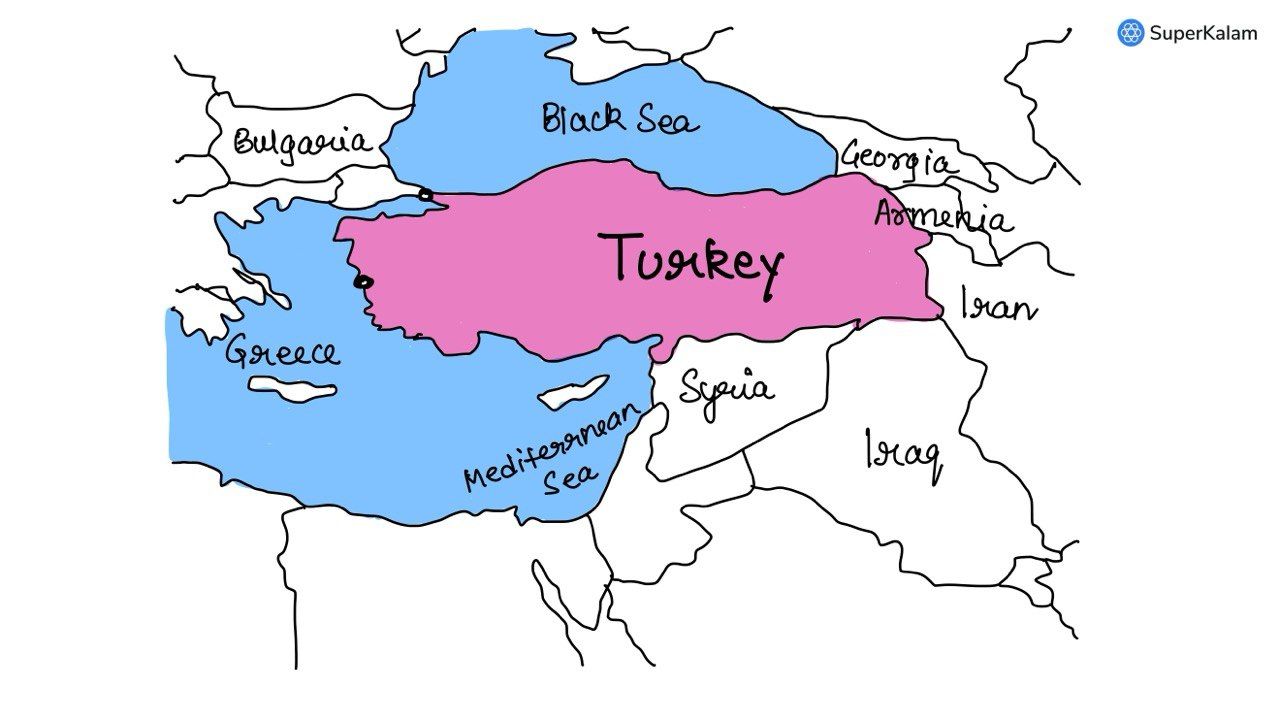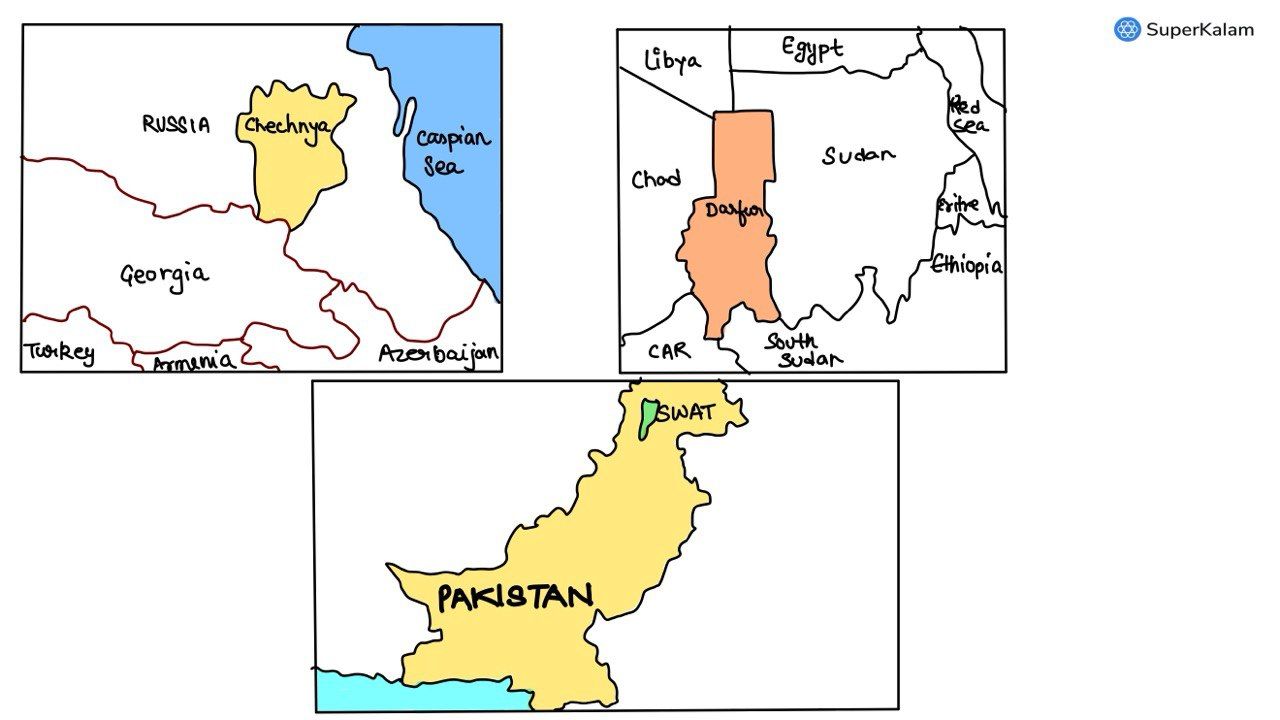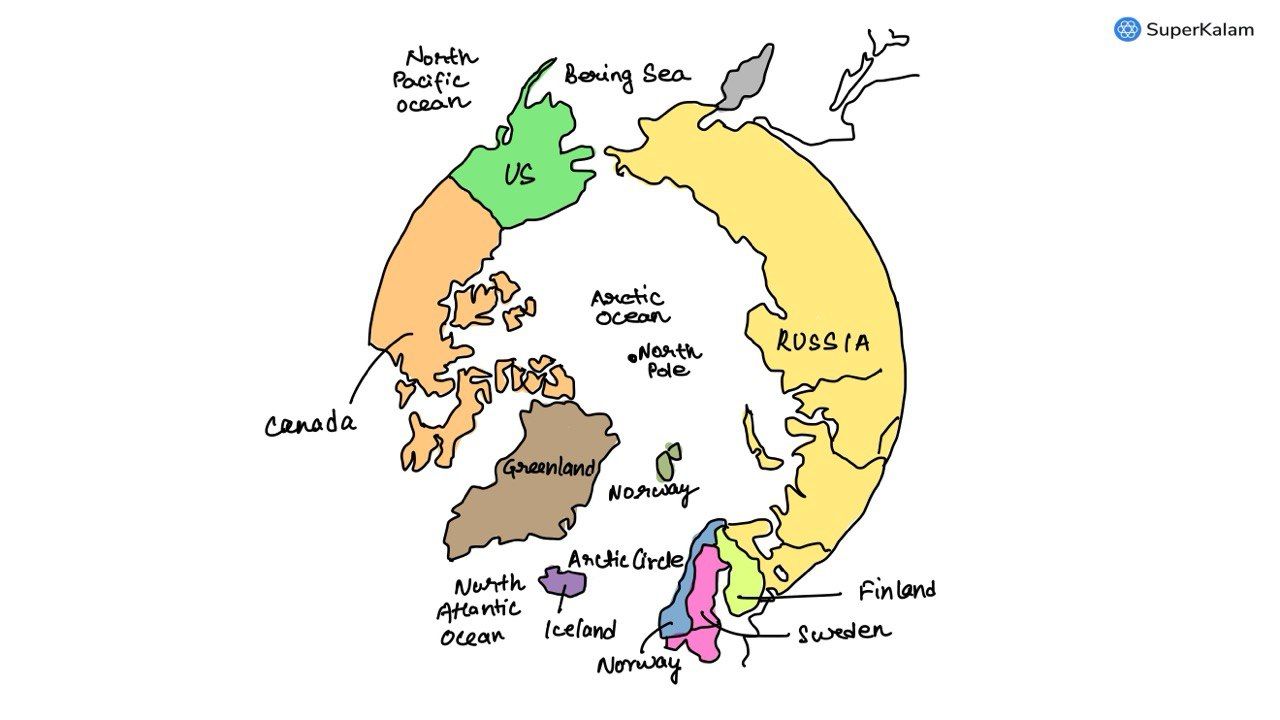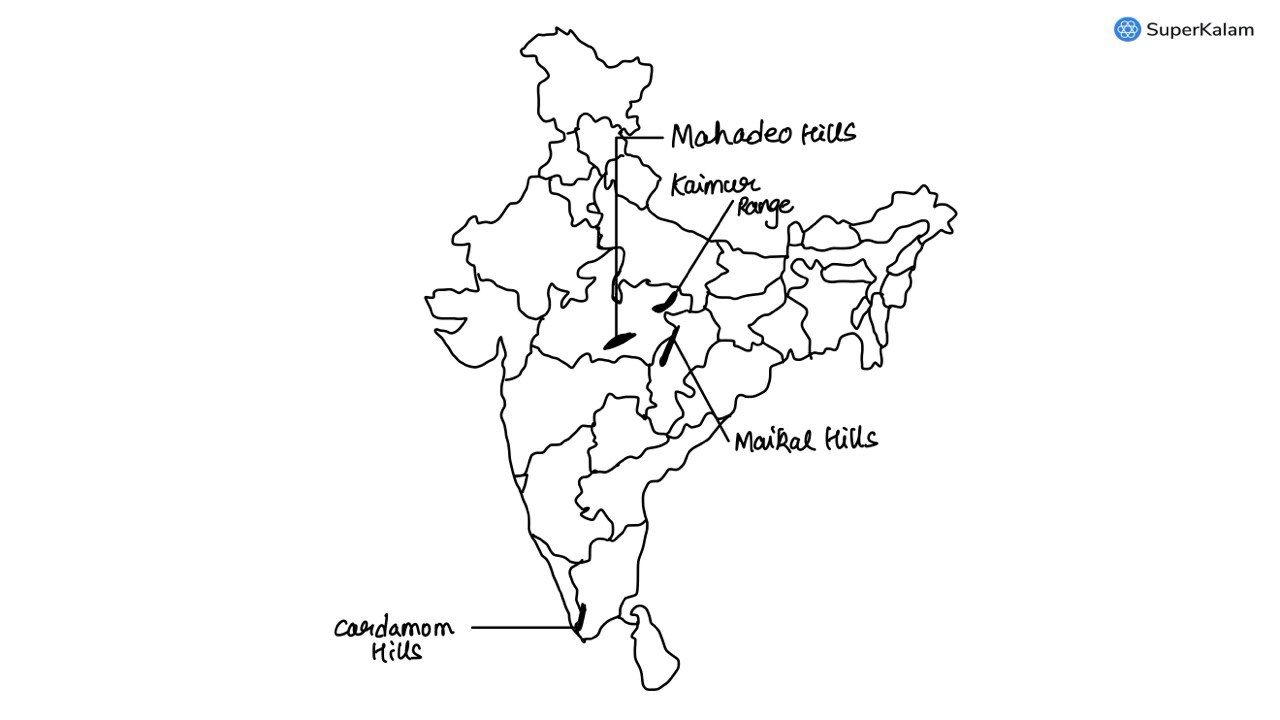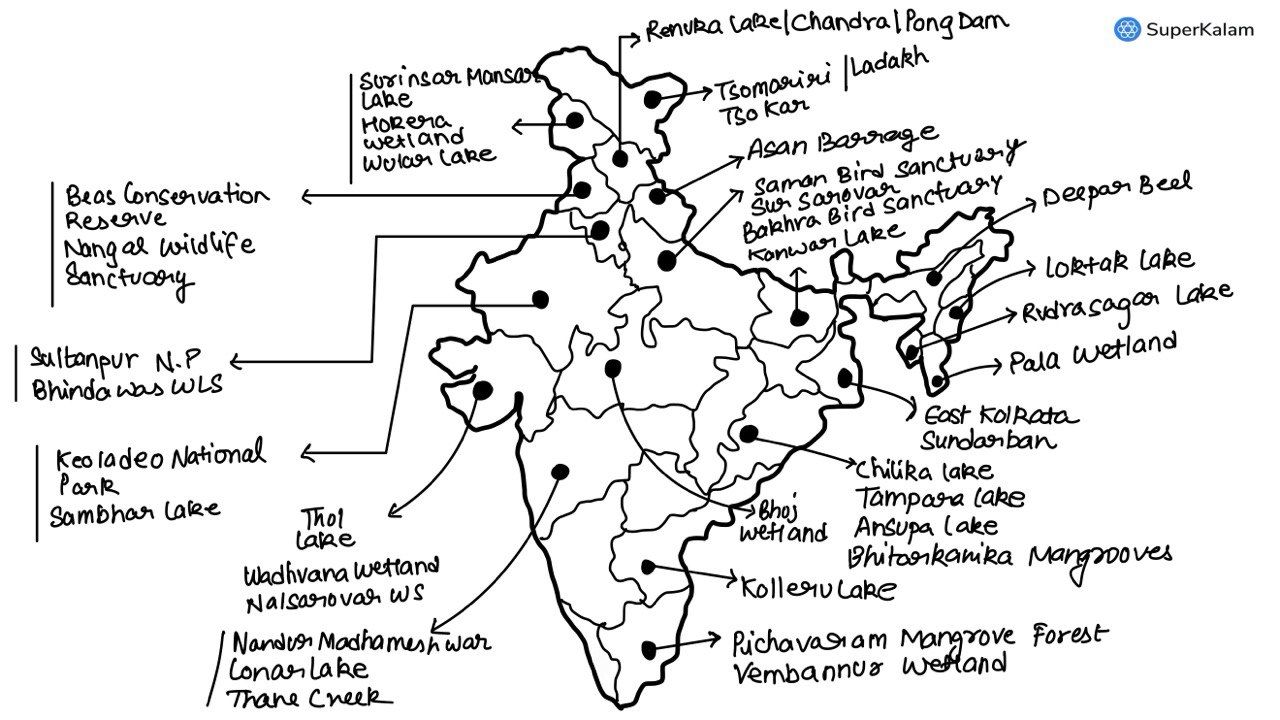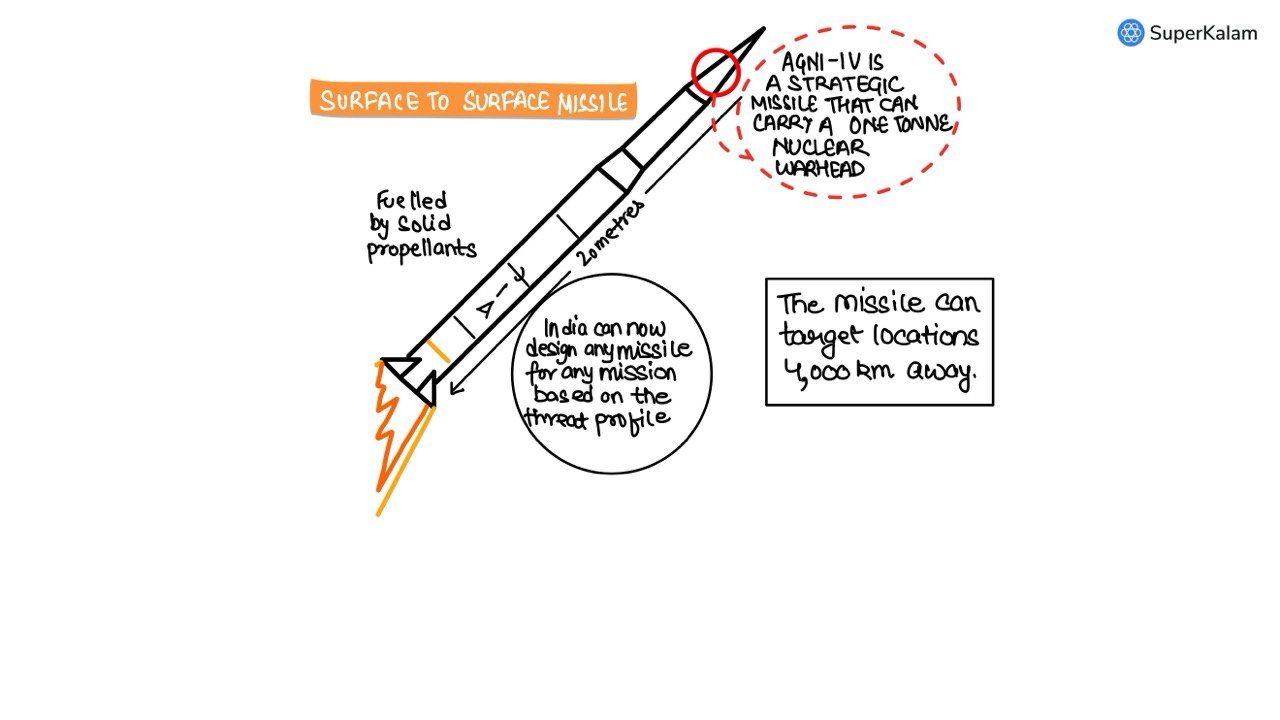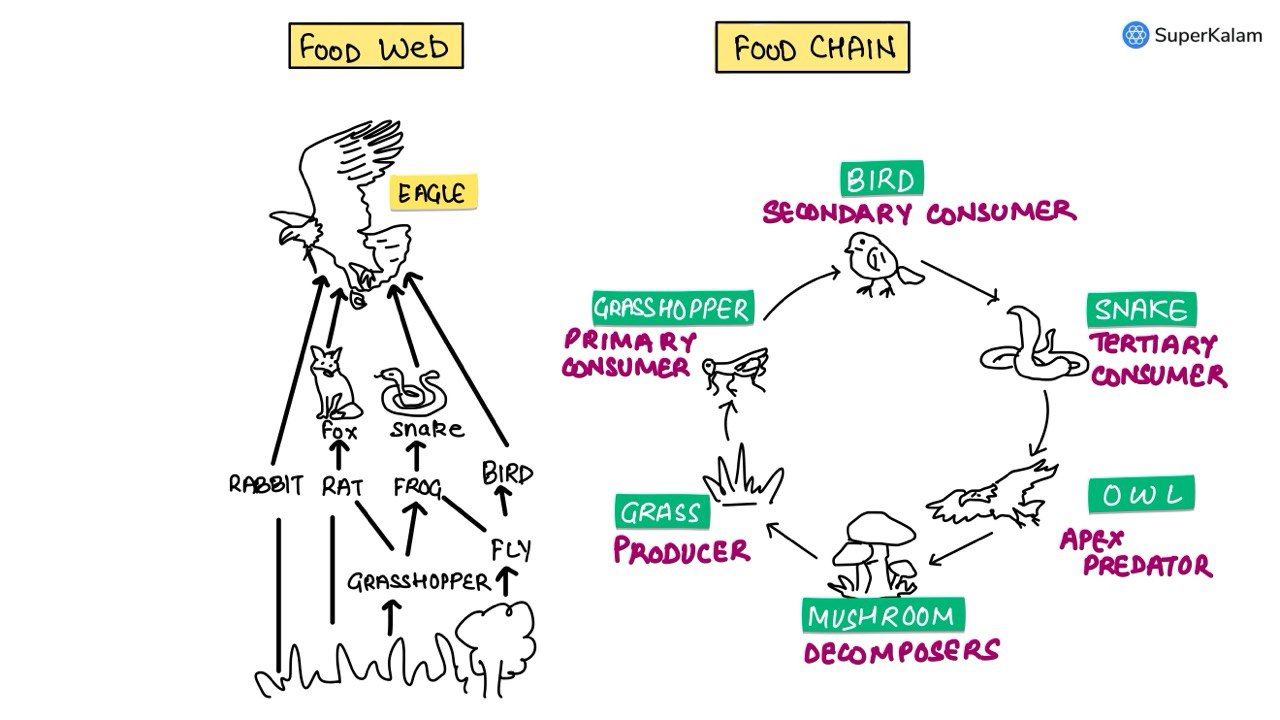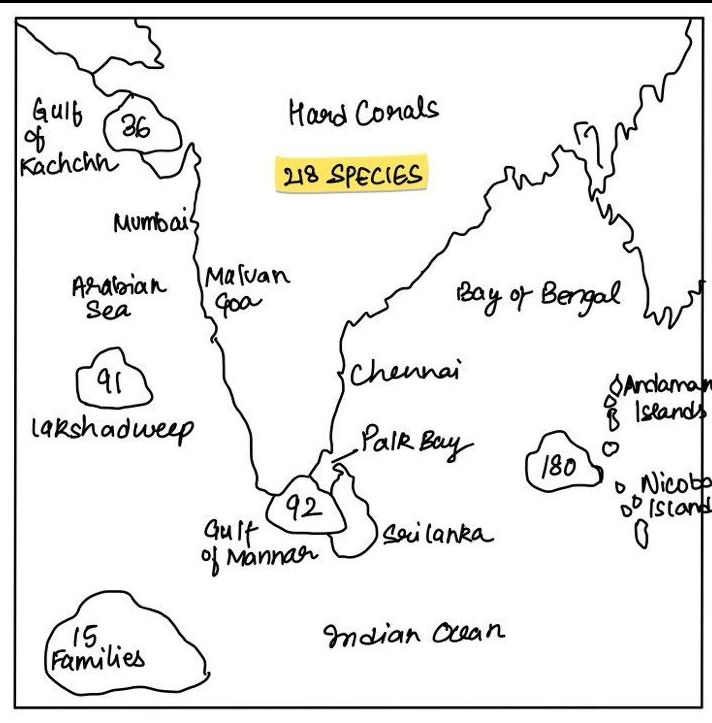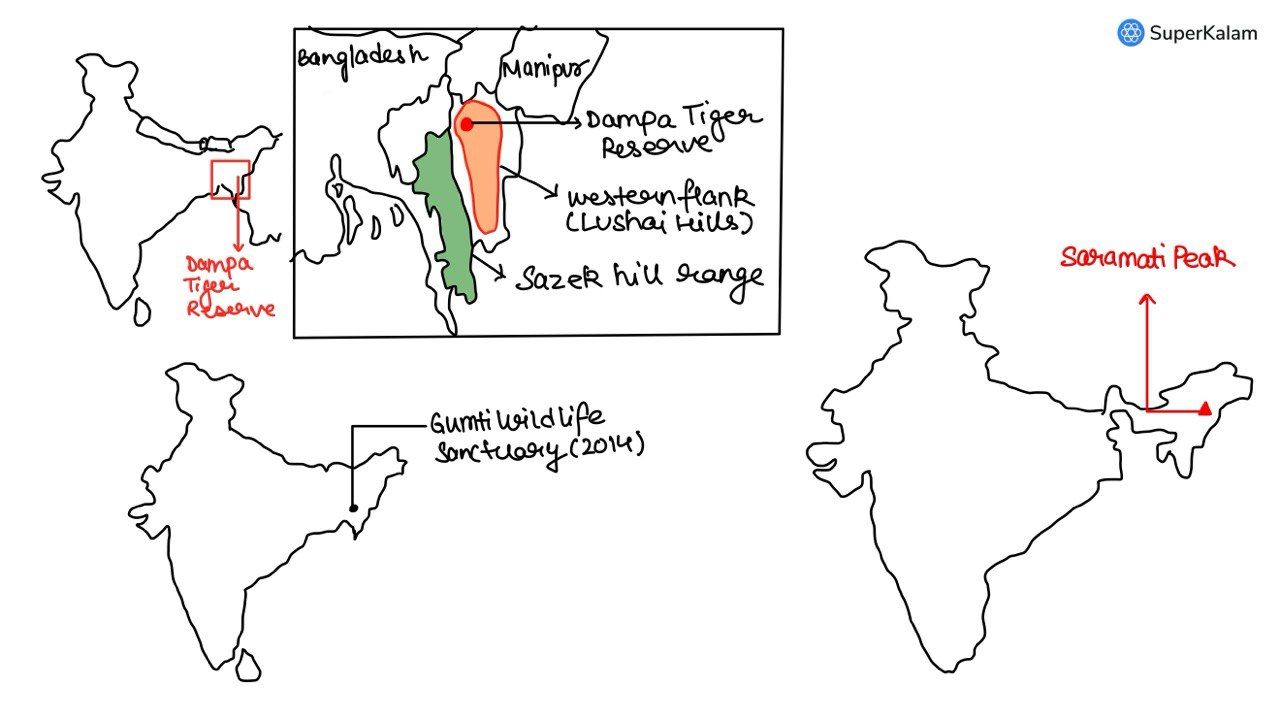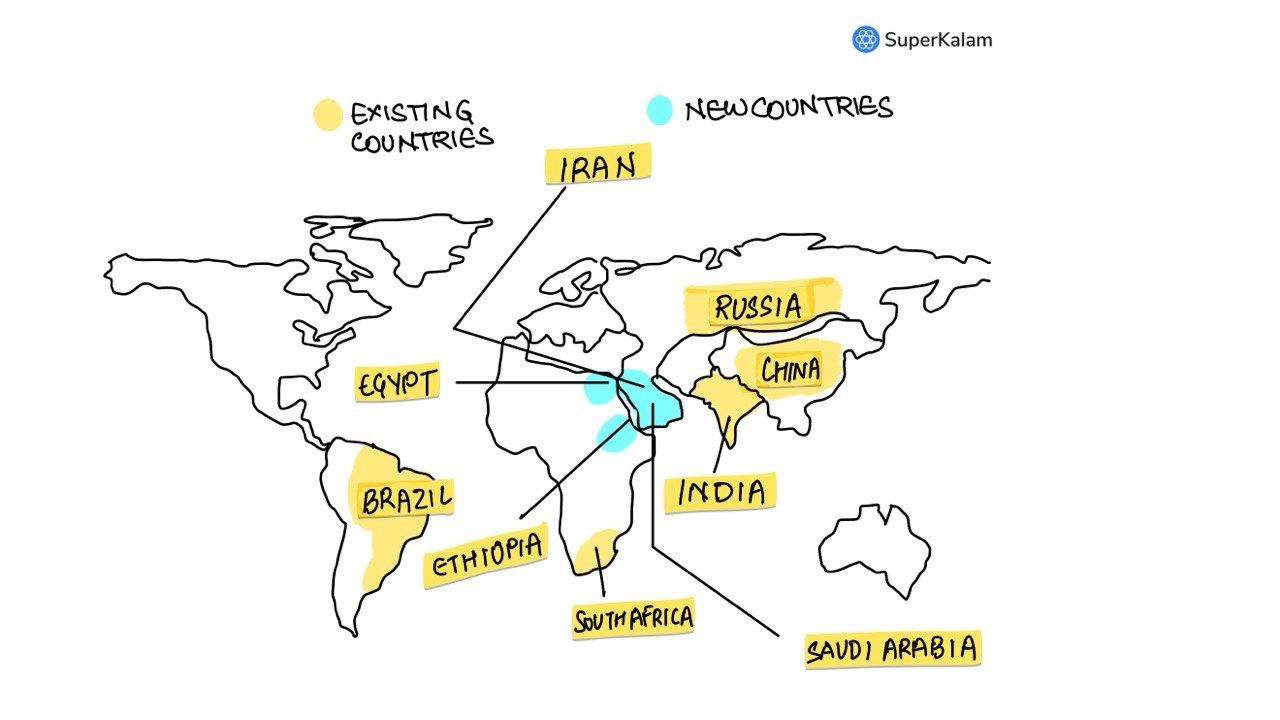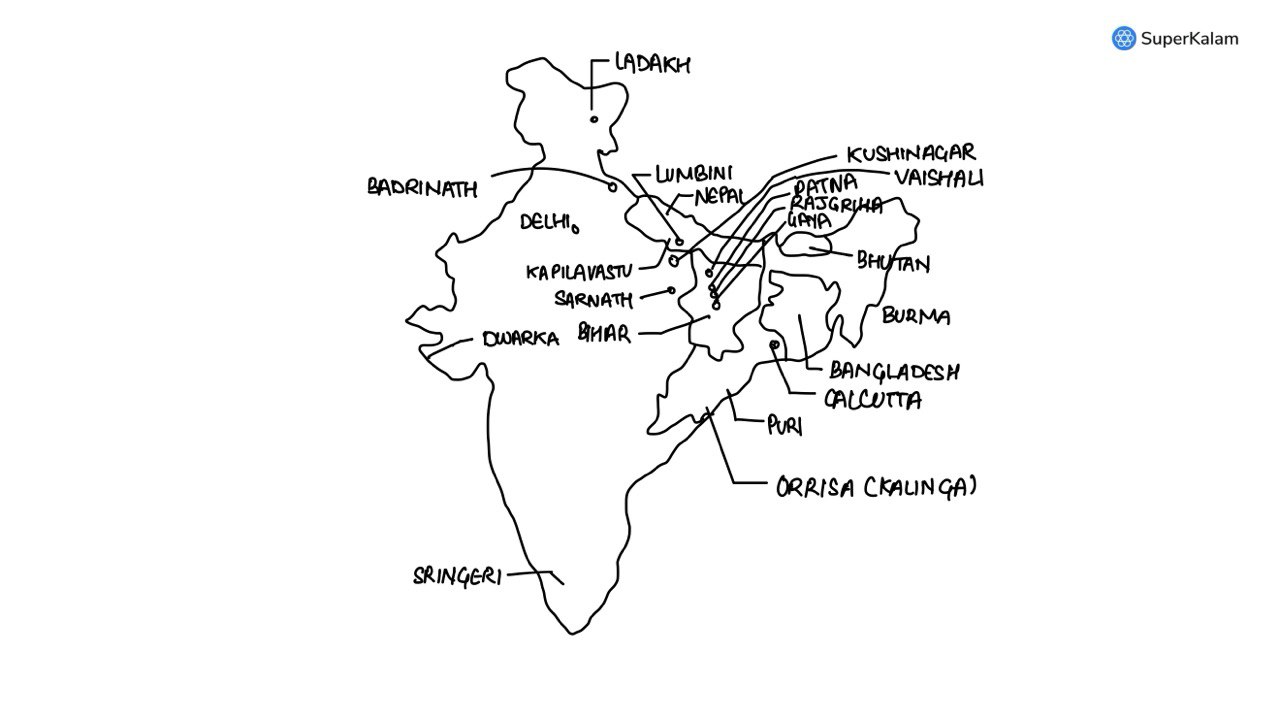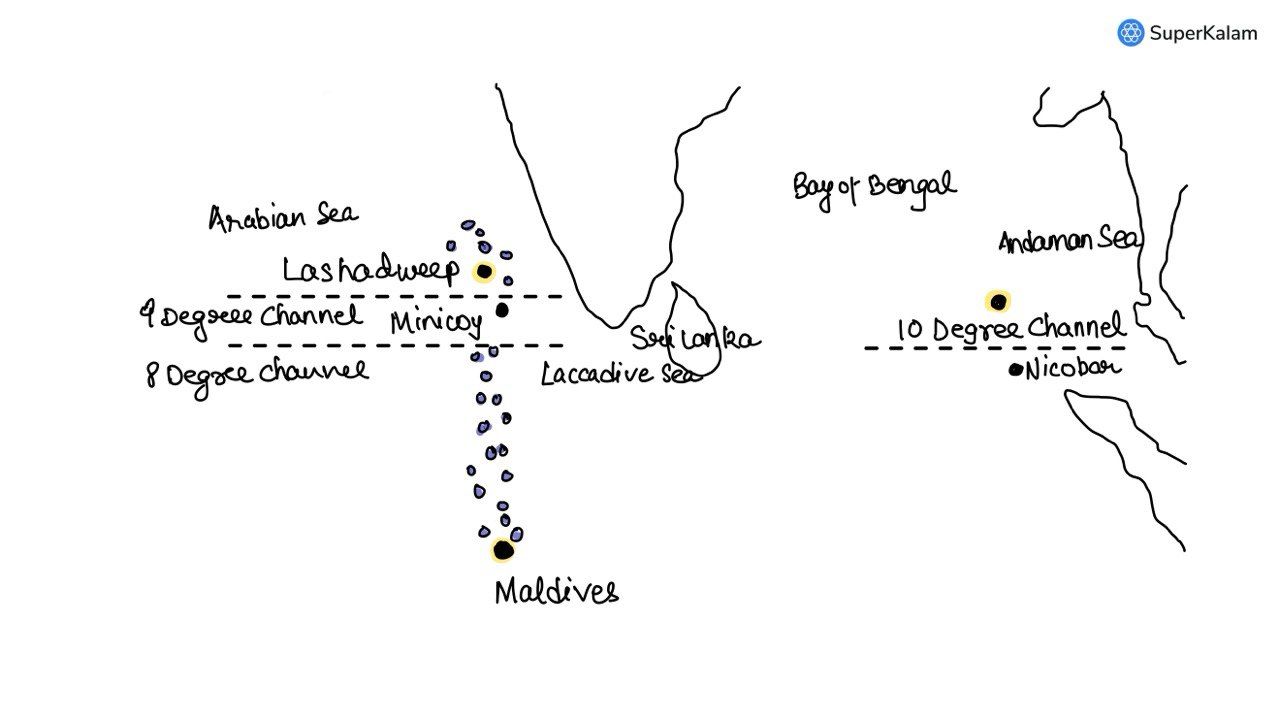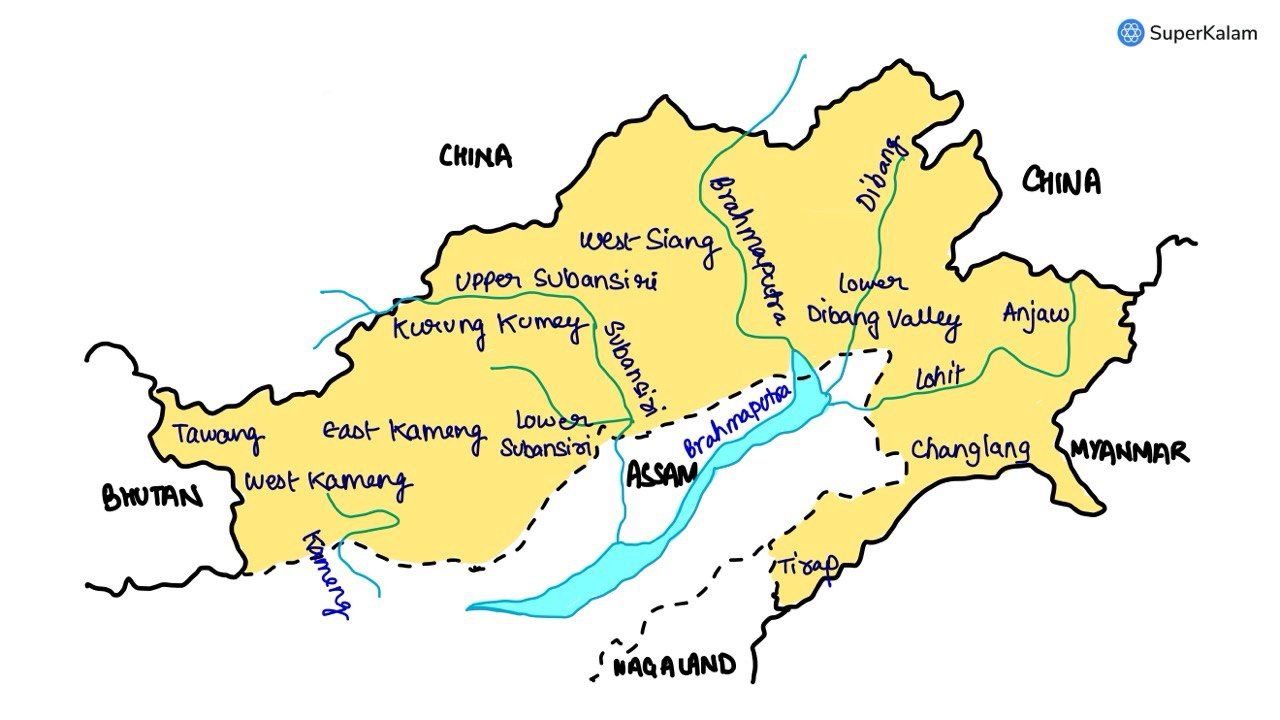UPSC Prelims 2014 Analysis
Subject-Wise MCQ Distribution
- Economy (12 Questions): Covered economic growth indicators, fiscal policy, and banking. Questions were evenly split between static concepts and current affairs, requiring a strong grasp of government schemes and financial policies.
- Environment & Ecology (28 Questions): A major section, focusing on biodiversity, conservation policies, and climate change. Many questions demanded an interdisciplinary approach, linking geography, science, and governance.
- Indian Polity (10 Questions): Tested constitutional provisions, governance structures, and legal frameworks. Several questions required conceptual clarity over rote memorization.
- Modern History (5 Questions): Covered the freedom struggle, key personalities, and national movements. A mix of match the following and direct factual questions were asked.
- Science & Technology (11 Questions): Included topics on biotechnology, space technology, and applied sciences. Many questions required linking current affairs with static concepts, testing awareness of recent advancements.
- Art & Culture (15 Questions): Had a higher-than-usual weightage, emphasizing Buddhism, tribal culture, architecture, and performing arts. Required a detailed understanding of cultural heritage and traditions.
- International Relations (4 Questions): Covered global organizations, treaties, and India’s diplomatic engagements. Most questions were current affairs-driven, requiring knowledge of recent geopolitical developments.
- Medieval History (1 Question): Only one question appeared, focusing on administration in medieval India.
- Geography (Indian Geography: 8, Physical Geography: 1, World Geography: 3): A balanced mix, with emphasis on Indian geography and geophysical phenomena. Many questions included maps, requiring location-based knowledge.

Difficulty Analysis
- Medium Questions (49 Questions): The largest category, demanding a blend of factual knowledge and analytical reasoning. Found in Economy, Polity, and Science & Technology.
- Hard Questions (26 Questions): Required deep conceptual understanding, often framed in multi-statement formats. Common in Environment, Science & Technology, and International Relations.
- Easy Questions (25 Questions): Mostly from History and Polity, with straightforward factual recall. Provided scoring opportunities for well-prepared candidates.

Variations in Question Framing
- Multi-Statement Questions (64%) – Dominant in Polity, Economy, and Environment. Required careful reading, logical deduction, and elimination skills. Many were tricky due to wordplay, making conceptual clarity crucial.
- Direct Questions (36%) – Focused on factual recall, primarily in History and Geography. These were easier to answer for candidates with strong static knowledge.

Current Affairs vs. Static Questions
- Current Affairs-Driven Questions (40%) – Strong presence in Economy, Science & Technology, and Environment. Required awareness of government schemes, international developments, and technological advances.
- Static Knowledge-Based Questions (60%) – Covered fundamental concepts, particularly in Polity, History, and Geography. This highlights that despite the increasing weightage of current affairs, core syllabus topics remain crucial.
Key Learnings for Future Preparation
- Focus on Conceptual Clarity: The paper emphasized analytical thinking, especially in Polity, Economy, and Environment. A strong foundation is essential.
- Balanced Subject Preparation: No single subject dominated. Candidates must cover all subjects equally to adapt to changing trends.
- Master Elimination Techniques: Many multi-statement questions required logical reasoning. Practicing structured MCQs improves accuracy.
- Static Knowledge is Crucial: While current affairs had a presence, subjects like Polity, History, and Geography remained dominant.
- Practice & Revision Matters: Regular mock tests, PYQs, and revisions are essential for improving speed and accuracy.
Subject-Wise Answer Key
QUESTION 1
Easy
Science & Technology
Prelims 2014
Consider the following pairs :
| Vitamin | Deficiency disease |
|---|---|
| 1. Vitamin C | Scurvy |
| 2. Vitamin D | Rickets |
| 3. Vitamin E | Night blindness |
Which of the pairs given above is/are correctly matched?
A. 1 and 2 only
B. 3 only
C. 1, 2 and 3
D. None
QUESTION 2
Hard
Environment & Ecology
Prelims 2014
With reference to technologies for solar power production, consider the following statements:
- ‘Photovoltaics’ is a technology that generates electricity by direct conversion of light into electricity, while ‘Solar Thermal’ is a technology that utilizes the Sun’s rays to generate heat which is further used in the electricity generation process.
- Photovoltaics generates Alternating Current (AC), while Solar Thermal generates Direct Current (DC).
- India has a manufacturing base for Solar Thermal technology, but not for Photovoltaics.
Which of the statements given above is/are correct?
A. 1 only
B. 2 and 3 only
C. 1, 2 and 3
D. None
QUESTION 3
Medium
Environment & Ecology
Prelims 2014
Which of the following are some important pollutants released by the steel industry in India?
- Oxides of sulphur
- Oxides of nitrogen
- Carbon monoxide
- Carbon dioxide
Select the correct answer using the code given below.
A. 1, 3 and 4 only
B. 2 and 3 only
C. 1 and 4 only
D. 1,2, 3 and 4
QUESTION 4
Medium
Economy
Prelims 2014
If the interest rate is decreased in an economy, it will
A. decrease the consumption expenditure in the economy
B. increase the tax collection of the Government
C. increase the investment expenditure in the economy
D. increase the total savings in the economy
QUESTION 5
Easy
Economy
Prelims 2014
Which of the following organizations brings out the publication known as ‘World Economic Outlook’?
A. The International Monetary Fund
B. The United Nations Development Programme
C. The World Economic Forum
D. The World Bank
QUESTION 6
Medium
Environment & Ecology
Prelims 2014
With reference to a conservation organization called Wetlands International, which of the following statements is/are correct?
- It is an intergovernmental organization formed by the countries which are signatories to the Ramsar Convention.
- It works at the field level to develop and mobilize knowledge, and use the practical experience to advocate for better policies.
Select the correct answer using the code given below.
A. 1 only
B. 2 only
C. Both 1 and 2
D. Neither 1 nor 2
QUESTION 7
Easy
Indian Polity
Prelims 2014
The power to increase the number of judges in the Supreme Court of India is vested in
A. the President of India
B. the Parliament
C. the Chief Justice of India
D. the Law Commission
QUESTION 8
Hard
Art & Culture
Prelims 2014
With reference to the famous Sattriya dance, consider the following statements:
- Sattriya is a combination of music, dance and drama.
- It is a centuries-old living tradition of Vaishnavites of Assam.
- It is based on classical Ragas and Talas of devotional songs composed by Tulsidas, Kabir and Mirabai.
Which of the statements given above is /are correct?
A. 1 only
B. 1 and 2 only
C. 2 and 3 only
D. 1, 2 and 3
QUESTION 9
Medium
Environment & Ecology
Prelims 2014
There is some concern regarding the nanoparticles of some chemical elements that are used by the industry in the manufacture of various products. Why?
- They can accumulate in the environment, and contaminate water and soil.
- They can enter food chains.
- They can trigger the production of free radicals.
Select the correct answer using the code given below.
A. 1 and 2 only
B. 3 only
C. 1 and 3 only
D. 1, 2 and 3
QUESTION 10
Medium
World Geography
Prelims 2014
Turkey is located between
A. Black Sea and the Caspian Sea
B. Black Sea and the Mediterranean Sea
C. Gulf of Suez and the Mediterranean Sea
D. Gulf of Aqaba and the Dead Sea
QUESTION 11
Hard
Environment & Ecology
Prelims 2014
With reference to ‘Global Environment Facility’, which of the following statements is/are correct
A. It serves as financial mechanism for 'Convention on biological diversity' and 'United Nations Framework Convention on Climate Change'
B. It undertakes scientific research on environmental issues at the global level
C. It is an agency under the OECD to facilitate the transfer of technology and funds to underdeveloped countries with
D. Both a and b
QUESTION 12
Hard
Art & Culture
Prelims 2014
Chaitra 1 of the national calendar based on the Saka Era corresponds to which one of the following dates of the Gregorian calendar in a normal year of 365 days?
A. 22 March or 21st March
B. 15th May or 16th May
C. 31st March or 30th March
D. 21st April or 20th April
QUESTION 13
Easy
Indian Polity
Prelims 2014
In the Constitution of India, promotion of international peace and security is included in the
A. The preamble to the Constitution
B. Directive Principles of State Policy DPSP
C. Fundamental Duties
D. Ninth Schedule
QUESTION 14
Medium
Environment & Ecology
Prelims 2014
The scientific view is that the increase in global temperature should not exceed 2 °C above the pre-industrial level. If the global temperature increases beyond 3°C above the pre-industrial level, what can be its possible impact/impacts on the world?
- Terrestrial biosphere tends toward a net carbon source
- Widespread coral mortality will occur.
- All the global wetlands will permanently disappear.
- Cultivation of cereals will not be possible anywhere in the world.
Select the correct answer using the code given below.
A. 1 only
B. 1 and 2 only
C. 2, 3 and 4 only
D. 1, 2, 3 and 4,
QUESTION 15
Easy
Modern History
Prelims 2014
What was/were the object/objects of Queen Victoria’s Proclamation (1858)?
- To disclaim any intention to annex the Indian States
- To place the Indian administration under the British Crown
- To regulate East India Company’s trade with India
Select the correct answer using the code given below.
A. 1 and 2 only
B. 2 only
C. 1 and 3 only
D. 1, 2 and 3
QUESTION 16
Medium
International Relations
Prelims 2014
Consider the following pairs
| Region often in news | Country |
|---|---|
| 1. Chechnya | Russian Federation |
| 2. Darfur | Mali |
| 3. Swat Valley | Iraq |
Which of the above pairs is/are correctly matched?
A. 1 only
B. 2 and 3 only
C. 1 and 3 only
D. 1, 2 and 3
QUESTION 17
Medium
International Relations
Prelims 2014
Recently, a series of uprisings of people referred to as ‘Arab Spring’ originally started from
A. Egypt
B. Lebanon
C. Syria
D. Tunisia
QUESTION 18
Medium
Science & Technology
Prelims 2014
Consider the following diseases
- Diphtheria
- Chickenpox
- Smallpox
Which of the above diseases has/have been eradicated in India?
A. 1 and 2 only
B. 3 only
C. 1, 2 and 3
D. None
QUESTION 19
Medium
Indian Geography
Prelims 2014
Consider the following pairs :
| National Highway | Cities Connected |
|---|---|
| 1. NH 4 | Chennai and Hyderabad |
| 2. NH 6 | Mumbai and Kolkata |
| 3. NH 15 | Ahmedabad and Jodhpur |
Which of the above pairs is/are correctly matched?
A. 1 and 2 only
B. 3 only
C. 1, 2 and 3
D. None
QUESTION 20
Medium
International Relations
Prelims 2014
Consider the following countries:
- Denmark
- Japan
- Russian Federation
- United Kingdom
- United States of America
Which of the above are the members of the ‘Arctic Council ‘?
A. 1, 2 and 3
B. 2, 3 and 4
C. 1, 4 and 5
D. 1, 3 and 5
QUESTION 21
Easy
Art & Culture
Prelims 2014
Which one of the following pairs does not form part of the six systems of Indian Philosophy?
A. Mimamsa and Vedanta
B. Nyaya and Vaisheshika
C. Lokayata and Kapalika
D. Sankhya and Yoga
QUESTION 22
Medium
Environment & Ecology
Prelims 2014
What is the significance of a practical approach to sugarcane production known as ‘Sustainable Sugarcane Initiative’?
- Seed cost is very low in this compared to the conventional method of cultivation.
- Drip irrigation can be practised very effectively in this.
- There is no application of chemical/ inorganic fertilizers at all in this.
- The scope for intercropping is more in this compared to the conventional method of cultivation.
Select the correct answer using the code given below.
A. 1 and 3 only
B. 1, 2 and 4 only
C. 2, 3 and 4 only
D. 1, 2, 3 and 4
QUESTION 23
Medium
Art & Culture
Prelims 2014
Ibadat Khana at Fatehpur Sikri was
A. the mosque for the use of Royal Family
B. Akbar’s private chamber prayer
C. the hall in which Akbar held discussions with scholars of various religions.
D. the room in which the nobles belonging to different religions gathered to discuss religious affairs.
QUESTION 24
Medium
Environment & Ecology
Prelims 2014
Consider the following international agreements:
- The International Treaty on Plant Genetic Resources for Food and Agriculture
- The United Nations Convention to Combat Desertification
- The World Heritage Convention
Which of the above has/have a bearing on the biodiversity?
A. 1 and 2 only
B. 3 only
C. 1 and 3 only
D. 1, 2, and 3
QUESTION 25
Easy
Indian Polity
Prelims 2014
Which one of the following Schedules of the Constitution of India contains provisions regarding anti-defection?
A. Second Schedule
B. Fifth Schedule
C. Eighth Schedule
D. Tenth Schedule
QUESTION 26
Easy
Art & Culture
Prelims 2014
The national motto of India, ‘Satyameva Jayate’ inscribed below the Emblem of India is taken from
A. Katha Upanishad
B. Chandogya Upanishad
C. Aitareya Upanishad
D. Mundaka Upanishad
QUESTION 27
Medium
Environment & Ecology
Prelims 2014
Consider the following statements:
- Maize can be used for the production of starch.
- Oil extracted from maize can be a feedstock for biodiesel.
- Alcoholic beverages can be produced by using maize.
Which of the statements given above is/are correct?
A. 1 only
B. 1 and 2 only
C. 2 and 3 only
D. 1, 2 and 3
QUESTION 28
Medium
Economy
Prelims 2014
In the context of Indian economy which of the following is/are the purpose/purposes of ‘Statutory Reserve Requirements’?
- To enable the Central Bank to control the amount of advances the banks can create
- To make the people’s deposits with banks safe and liquid
- To prevent commercial banks from making excessive profits
- To force the banks to have sufficient vault cash to meet their day-to-day requirements
Select the correct answer using the code given below.
A. 1 only
B. 1 and 2 only
C. 2 and 3 only
D. 1, 2, 3 and 4
QUESTION 29
Hard
Science & Technology
Prelims 2014
Which of the following pair is/are correctly matched?
| Spacecraft | Purpose |
|---|---|
| 1. Cassini-Huygens | Orbiting Venus and transmitting data to the Earth |
| 2. Messenger | Mapping and investigating the Mercury |
| 3. Voyager 1 and 2 | Exploring the outer solar system |
Select the correct answer using the code given below.
A. 1 only
B. 2 and 3 only
C. 1 and 3 only
D. 1, 2 and 3
QUESTION 30
Hard
Art & Culture
Prelims 2014
With reference to India’s culture and tradition, what is ‘Kalaripayattu’?
A. It is an ancient Bhakti cult of Shaivism still prevalent in some parts of South India
B. It is an ancient style bronze and brass work still found in southern part of Coromandel area
C. It is an ancient form of dance-drama and a living tradition in the northern part of Malabar
D. It is an ancient martial art and a living tradition in some parts of South India
QUESTION 31
Medium
Environment & Ecology
Prelims 2014
Consider the following statements:
- Animal Welfare Board of India is established under the Environment (Protection) Act, 1986.
- National Tiger Conservation Authority is a statutory body.
- National Ganga River Basin Authority is chaired by the Prime Minister.
Which of the statements given above is/ are correct?
A. 1 only
B. 2 and 3 only
C. 2 only
D. 1, 2 and 3
QUESTION 32
Medium
Indian Geography
Prelims 2014
Consider these pairs -
- Cardamom Hills -- Coromandel Coast
- Kaimur Hills -- Konkan Coast
- Mahadeo Hills -- Central India
- Mikir Hills -- North-East India
Which of the above pairs are correctly matched?
A. 1 and 2 only
B. 2 and 3 only
C. 3 and 4 only
D. 2 and 4 only
QUESTION 33
Medium
Social Issues & Schemes
Prelims 2014
What is/are the facility/facilities the beneficiaries can get from the services of Business Correspondent (Bank Saathi) in branchless areas?
- It enables the beneficiaries to draw their subsidies and social security benefits in their villages.
- It enables the beneficiaries in rural areas to make deposits and withdrawals.
Select the correct answer using the code given below.
A. 1 only
B. 2 only
C. Both 1 and 2
D. Neither 1 nor 2
QUESTION 34
Hard
Environment & Ecology
Prelims 2014
If you walk through the countryside, you are likely to see some birds stalking alongside the cattle to seize the insects, disturbed by their movement through grasses, Which of the following is/are such bird/birds?
- Painted Stork
- Common Myna
- Black-necked Crane
Select the correct answer using the code given below.
A. 1 and 2
B. 2 only
C. 2 and 3
D. 3 only
QUESTION 35
Hard
Environment & Ecology
Prelims 2014
Consider the following pairs
| Wetlands | Confluence of rivers |
|---|---|
| 1. Harike Wetlands | Beas and Satluj/Sutlej |
| 2. Keoladeo Ghana National Park | Banas and Chambal |
| 3. Kolleru Lake | Confluence of Musi and Krishna |
Which of the above pairs is/are correctly matched?
A. 1 only
B. 2 and 3 only
C. 1 and 3 only
D. 1, 2 and 3
QUESTION 36
Hard
Environment & Ecology
Prelims 2014
Every year, a month-long ecologically important campaign/festival is held during which certain communities/tribes plant saplings of fruit-bearing trees. Which of the following are such communities/tribes?
A. Bhutia and Lepcha
B. Gond and Korku
C. lrula and Toda
D. Sahariya and Agariya
QUESTION 37
Hard
Indian Polity
Prelims 2014
Consider the following statements: A Constitutional Government is one which -
- Places effective restrictions on individual liberty in the interest of State Authority
- Places effective restrictions on the Authority of the State in the interest of individual liberty
Which of the statements given above is/are correct?
A. 1 only
B. 2 only
C. Both 1 and 2
D. Neither 1 nor 2
QUESTION 38
Medium
Indian Polity
Prelims 2014
Which of the following is/are the function/functions of the Cabinet Secretariat?
- Preparation of agenda for Cabinet Meetings
- Secretarial assistance to Cabinet Committees
- Allocation of financial resources to the Ministries
Select the correct answer using the code given below.
A. 1 only
B. 2 and 3 only
C. 1 and 2 only
D. 1, 2 and 3
QUESTION 39
Medium
Economy
Prelims 2014
Which of the following are associated with ‘Planning’ in India?
- The Finance Commission
- The National Development Council
- The Union Ministry of Rural Development
- The Union Ministry of Urban Development
- The Parliament
Select the correct answer using the code given below.
A. 1, 2 and 5 only
B. 1, 3 and 4 only
C. 2 and 5 only
D. 1, 2, 3, 4 and 5
QUESTION 40
Easy
Science & Technology
Prelims 2014
Which one of the following is the process involved in photosynthesis?
A. Potential energy is released to form free energy
B. Free energy is converted into potential energy and stored
C. Food is oxidized to release carbon dioxide and water
D. Oxygen is taken, and carbon dioxide and water vapour are given out
QUESTION 41
Medium
World Geography
Prelims 2014
What is the correct sequence of occurrence of the following cities in South-East Asia as one proceeds from south to north?
- Bangkok
- Hanoi
- Jakarta
- Singapore
Select the correct answer using the code given below.
A. 4-2-1-3
B. 3-2-4-1
C. 3-4-1-2
D. 4-3-2-1
QUESTION 42
Medium
Science & Technology
Prelims 2014
Which reference to Agni-IV Missile, which of the following statements is/are correct?
- It is a surface-to-surface missile.
- It is fuelled by liquid propellant only.
- It can deliver one-tonne nuclear warheads about 7500 km away.
Select the correct answer using the code given below.
A. 1 only
B. 2 and 3 only
C. 1 and 3 only
D. 1, 2 and 3
QUESTION 43
Hard
Environment & Ecology
Prelims 2014
Which one of the following is the correct sequence of a food chain?
A. Diatoms-Crustaceans-Herrings
B. Crustaceans-Diatoms-Herrings
C. Diatoms-Herrings-Crustaceans
D. Crustaceans-Herrings-Diatoms
QUESTION 44
Medium
Environment & Ecology
Prelims 2014
Which of the following have coral reefs?
- Andaman and Nicobar Islands
- Gulf of Kutch
- Gulf of Mannar
- Sunderbans
Select the correct answer using the code given below.
A. 1, 2 and 3 only
B. 2 and 4 only
C. 1 and 3 only
D. 1, 2, 3 and 4
QUESTION 45
Easy
Economy
Prelims 2014
The sales tax you pay while purchasing a toothpaste is a
A. tax imposed by the Central Government.
B. tax imposed by the Central Government but collected by the State Government
C. tax imposed by the State Government but collected by the Central Government
D. tax imposed and collected by the State Government
QUESTION 46
Easy
Environment & Ecology
Prelims 2014
Lichens, which are capable of initiating ecological succession even on a bare rock, are actually a symbiotic association of
A. algae and bacteria
B. algae and fungi
C. bacteria and fungi
D. Fungi and mosses
QUESTION 47
Hard
Indian Geography
Prelims 2014
If you travel through the Himalayas, you are Likely to see which of the following plants naturally growing there?
- Oak
- Rhododendron
- Sandalwood
Select the correct answer using the code given below.
A. 1 and 2 only
B. 3 only
C. 1 and 3 only
D. 1, 2 and 3
QUESTION 48
Hard
Science & Technology
Prelims 2014
Which of the following statements is/are correct regarding vegetative propagation of plants?
- Vegetative propagation produces clonal population.
- Vegetative propagation helps in eliminating the virus.
- Vegetative propagation can be practised most of the year.
Select the correct answer using the code given below.
A. 1 only
B. 2 and 3 only
C. 1 and 3 only
D. 1, 2 and 3
QUESTION 49
Medium
Environment & Ecology
Prelims 2014
With reference to Bombay Natural History Society (BNHS), consider the following statements :
- It is an autonomous organization under the Ministry of Environment and Forests.
- It strives to conserve nature through action-based research, education and public awareness.
- It organizes and conducts nature trails and camps for the general public.
Which of the statements given above is/are correct?
A. 1 and 3 only
B. 2 only
C. 2 and 3 only
D. 1, 2 and 3
QUESTION 50
Hard
Art & Culture
Prelims 2014
With reference to ‘Changpa’ community of India, consider the following statement:
- They live mainly in the State of Uttarakhand.
- They rear the Pashmina goats that yield fine wool.
- They are kept in the category of Scheduled Tribes.
Which of the statements given above is/are correct?
A. 1 only
B. 2 and 3 only
C. 3 only
D. 1, 2 and 3
QUESTION 51
Hard
Indian Geography
Prelims 2014
Consider the following pairs
- Dampa Tiger Reserve: Mizoram
- Gumti Wildlife Sanctuary: Sikkim
- Saramati Peak: Nagaland
Which of the above pairs is /are correctly matched?
A. 1 only
B. 2 and 3 only
C. 1 and 3 only
D. 1, 2 and 3
QUESTION 52
Medium
Environment & Ecology
Prelims 2014
Consider the following statements regarding ‘Earth Hour’:
- It is an initiative of UNEP and UNESCO.
- It is a movement in which the participants switch off the lights for one hour on a certain day every year.
- It is a movement to raise awareness about climate change and the need to save the planet.
Which of the statements given above is/are correct?
A. 1 and 3 only
B. 2 only
C. 2 and 3 only.
D. 1, 2 and 3
QUESTION 53
Medium
Environment & Ecology
Prelims 2014
What are the benefits of implementing the ‘Integrated Watershed Development Programme’?
- Prevention of soil runoff
- Linking the country’s perennial rivers with seasonal rivers
- Rainwater harvesting and recharge of the groundwater table
- Regeneration of natural vegetation
Select the correct answer using the code given below.
A. 1 and 2 only
B. 2, 3 and 4 only
C. 1, 3 and 4 only
D. 1, 2, 3 and 4
QUESTION 54
Easy
World Geography
Prelims 2014
The seasonal reversal of winds is the typical characteristic of -
A. Equatorial climate
B. Mediterranean climate
C. Monsoon climate
D. All of the above climates
QUESTION 55
Medium
Indian Polity
Prelims 2014
Consider the following statements regarding a No-Confidence Motion in India:
- There is no mention of a No-Confidence Motion in the Constitution of India.
- A Motion of No-Confidence can be introduced in the Lok Sabha only.
Which of the statements given above is/are correct?
A. 1 only
B. 2 only
C. Both 1 and 2
D. Neither 1 nor 2
QUESTION 56
Hard
Art & Culture
Prelims 2014
Consider the following towns of India:
- Bhadrachalam
- Chanderi
- Kancheepuram
- Karnal
Which of the above are famous for the production of traditional sarees / fabric?
A. 1 and 2 only
B. 2 and 3 only
C. 1, 2 and 3
D. 1, 3 and 4
QUESTION 57
Medium
Art & Culture
Prelims 2014
Consider the following pairs
- Garba : Gujarat
- Mohiniattam : Odisha
- Yakshagana : Karnataka
Which of the pairs given above is/are correctly matched?
A. 1 only
B. 2 and 3 only
C. 1 and 3 only
D. 1, 2 and 3
QUESTION 58
Easy
Modern History
Prelims 2014
The Radcliffe Committee was appointed to -
A. solve the problem of minorities in India
B. give effect to the Independence Bill
C. delimit the boundaries between India and Pakistan
D. enquire into the riots in East Bengal
QUESTION 59
Hard
Art & Culture
Prelims 2014
Consider the following statements:
- ‘Bijak’ is a composition of the teachings of Saint Dadu Dayal.
- The Philosophy of PushtiMarg was propounded by Madhvacharya.
Which of the statements given above is/are correct?
A. 1 only
B. 2 only
C. Both 1 and 2
D. Neither 1 nor 2
QUESTION 60
Hard
Indian Geography
Prelims 2014
With reference to two non-conventional energy sources called ‘coal bed methane’ and ‘shale gas’, consider the following statements:
- Coal bed methane is the pure methane gas extracted from coal seams, while shale gas is a mixture of propane and butane only that can be extracted from fine-grained sedimentary rocks.
- In India abundant coal bed methane sources exist, but so far no shale gas sources have been found.
Which of the statements given above is/are correct?
A. 1 only
B. 2 only
C. Both 1 and 2
D. Neither 1 nor 2
QUESTION 61
Easy
Modern History
Prelims 2014
The 1929 Session of Indian National Congress is of significance in the history of the Freedom Movement because the -
A. attainment of Self-Government was declared as the objective of the Congress
B. attainment of Poorna Swaraj Was adopted as the goal of the Congress
C. Non-Cooperation Movement was launched
D. decision to participate in the Round Table Conference in London was taken
QUESTION 62
Medium
International Relations
Prelims 2014
With reference to a grouping of countries known as BRICS, consider the following statements:
- The First Summit of BRICS was held in Rio de Janeiro in 2009.
- South Africa was the last to join the BRICS grouping.
Which of the statements given above is/are correct?
A. 1 only
B. 2 only
C. Both 1 and 2
D. Neither 1 nor 2
QUESTION 63
Medium
Environment & Ecology
Prelims 2014
The most important strategy for the conservation of biodiversity together with traditional human life is the establishment of
A. biosphere reserves
B. botanical gardens
C. national parks
D. wildlife sanctuaries
QUESTION 64
Hard
Medieval History
Prelims 2014
In medieval India, the designations ‘Mahattara’ and ‘Pattakila’ were used for
A. Military officers
B. Village headmen
C. Specialists in Vedic rituals
D. Chiefs of craft guilds
QUESTION 65
Medium
Economy
Prelims 2014
Programme/ Project Ministry
- Drought-Prone Area Programme: Ministry of Agriculture
- Desert Development Programme: Ministry of Environment and Forests
- National Watershed Development Project for Rainfed Areas: Ministry of Rural Development
Which of the above pairs are correctly matched?
A. 1 and 2 only
B. 3 only
C. 1, 2 and 3
D. None
QUESTION 66
Easy
Science & Technology
Prelims 2014
In addition to fingerprint scanning, which of the following can be used in the biometric identification of a person?
- Iris scanning
- Retinal scanning
- Voice recognition
Select the correct answer using the code given below.
A. 1 only
B. 2 and 3 only
C. 1 and 3 only
D. 1, 2 and 3
QUESTION 67
Medium
Science & Technology
Prelims 2014
Among the following organisms, which one does not belong to the class of the other three?
A. Crab
B. Mite
C. Scorpion
D. Spider
QUESTION 68
Easy
Economy
Prelims 2014
What does venture capital mean?
A. A short-term capital provided to industries
B. A long-term start-up capital provided to new entrepreneurs
C. Funds provided to industries at times of incurring losses
D. Funds provided for replacement and renovation of industries
QUESTION 69
Hard
Ancient History
Prelims 2014
Which of the following Kingdoms were associated with the life of the Buddha?
- Avanti
- Gandhara
- Kosala
- Magadha
Select the correct answer using the code given below.
A. 1, 2 and 3
B. 2 and 4
C. 1, 3 and 4 only
D. 3 and 4
QUESTION 70
Medium
Economy
Prelims 2014
With reference to Union Budget, which of the following is/are covered under Non-Plan Expenditure?
- Defence -expenditure
- Interest payments
- Salaries and pensions
- Subsidies
Select the correct answer using the code given below.
A. 1 only
B. 2 and 3 only
C. 1, 2, 3 and 4
D. None
QUESTION 71
Easy
Indian Polity
Prelims 2014
Consider the following statements:
- The President shall make rules for the more convenient transaction of the business of the Government of India, and for the allocation among Ministers of the said business.
- All executive actions of the Government of India shall be expressed to be taken in the name of the Prime Minister.
Which of the statements given above is/are correct?
A. 1 only
B. 2 only
C. Both 1 and 2
D. Neither 1 nor 2
QUESTION 72
Medium
Economy
Prelims 2014
With reference to Balance of Payments, which of the following constitutes/constitute the Current Account?
- Balance of trade
- Foreign assets
- Balance of invisibles
- Special Drawing Right
Select the correct answer using the code given below.
A. 1 only
B. 2 and 3
C. 1 and 3
D. 1, 2 and 4
QUESTION 73
Hard
Art & Culture
Prelims 2014
A community of people called Manganiyars is well-known for their -
A. martial arts in North-East India
B. musical tradition in North-West India
C. classical vocal music in South India
D. pietra dura tradition in Central India
QUESTION 74
Medium
Science & Technology
Prelims 2014
Which of the following is/are the example/examples of chemical change?
- Crystallization of sodium chloride
- Melting of ice
- Souring of milk
Select the correct answer using the code given below.
A. 1 and 2 only
B. 3 only
C. 1, 2 and 3
D. None
QUESTION 75
Easy
Physical Geography
Prelims 2014
Which of the following phenomena might have influenced the evolution of organisms?
- Continental drift
- Glacial cycles
Select the correct answer using the code given below.
A. 1 only
B. 2 only
C. Both 1 and 2
D. Neither 1 nor 2.
QUESTION 76
Medium
Environment & Ecology
Prelims 2014
If a wetland of international importance is brought under the ‘Montreux Record’, what does it imply?
A. Changes in ecological character have occurred, are occurring or are likely to occur in the wetland as a result of human interference
B. The country in which the wetland is located should enact a law to prohibit any human activity within
C. The survival of the wetland depends on the cultural practices and traditions of certain communities living in its
D. It is given the status of ‘World Heritage Site’
QUESTION 77
Medium
Science & Technology
Prelims 2014
Consider the following techniques/phenomena:
- Budding and grafting in fruit plants
- Cytoplasmic male sterility
- Gene silencing
Which of the above is/are used to create transgenic crops?
A. 1 only
B. 2 and 3
C. 1 and 3
D. None
QUESTION 78
Easy
Environment & Ecology
Prelims 2014
Other than poaching, what are the possible reasons for the decline in the population of Ganges River Dolphins?
- Construction of dams and barrages on rivers
- Increase in the population of crocodiles in rivers
- Getting trapped in fishing nets accidentally
- Use of synthetic fertilizers and other agricultural chemicals in crop-fields in the vicinity of rivers
Select the correct answer using the code given below.
A. 1 and 2 only
B. 2 and 3 only
C. 1, 3 and 4 only
D. 1, 2, 3 and 4
QUESTION 79
Medium
Environment & Ecology
Prelims 2014
Brominated flame retardants are used in many household products like mattresses and upholstery. Why is there some concern about their use?
- They are highly resistant to degradation in the environment.
- They are able to accumulate in humans and animals.
Select the correct answer using the code given below.
A. 1 only
B. 2 only
C. Both 1 and 2
D. Neither 1 nor 2
QUESTION 80
Easy
Environment & Ecology
Prelims 2014
Which of the following adds/add carbon dioxide to the carbon cycle on the planet Earth?
- Volcanic action
- Respiration
- Photosynthesis
- The decay of organic matter
Select the correct answer using the code given below.
A. 1 and 3 only
B. 2 only
C. 1, 2 and 4 only
D. 1, 2, 3 and 4
QUESTION 81
Medium
Environment & Ecology
Prelims 2014
With reference to the Neem tree, consider the following statements:
- Neem oil can be used as a pesticide to control the proliferation of some species of insects and mites.
- Neem seeds are used in the manufacture of biofuels and hospital detergents.
- Neem oil has applications in the pharmaceutical industry.
Which of the statements given above is/are correct?
A. 1 and 2 only
B. 3 only
C. 1 and 3 only
D. 1, 2 and 3
QUESTION 82
Medium
Art & Culture
Prelims 2014
With reference to the cultural history of India, the term ‘Panchayatan’ refers to
A. an assembly of village elders
B. a religious sect
C. a style of temple construction
D. an administrative functionary
QUESTION 83
Hard
Economy
Prelims 2014
In the context of food and nutritional security of India, enhancing the ‘Seed Replacement Rates’ of various crops helps in achieving the food production targets of the future. But what is/are the constraint/ constraints in its wider / greater implementation?
- There is no National Seeds Policy in place.
- There is no participation of private sector seed companies in the supply of quality vegetable seeds of vegetables and planting materials of horticultural crops.
- There is a demand-supply gap regarding quality seeds in case of low value and high volume crops.
Select the correct answer using the code given below.
A. 1 and 2
B. 3 only
C. 2 and 3
D. None
QUESTION 84
Medium
Modern History
Prelims 2014
The Ghadr (Ghadar) was a
A. Revolutionary Association of Indians with headquarters at San Francisco.
B. nationalist organization operating from Singapore
C. militant organization with headquarters at Berlin
D. communist movement for India’s freedom with headquarters at Tashkent
QUESTION 85
Medium
Economy
Prelims 2014
The main objective of the 12th Five-Year Plan is
A. inclusive growth and poverty reduction
B. inclusive and sustainable growth
C. sustainable and inclusive growth to reduce unemployment
D. Faster, sustainable and more inclusive growth.
QUESTION 86
Medium
Economy
Prelims 2014
In India, cluster bean (Guar) is traditionally used as a vegetable or animal feed, but recently the cultivation of this has assumed significance. Which one of the following statements is correct in this context?
A. The oil extracted from seeds is used in the manufacture of biodegradable plastics
B. The gum made from its seeds is used in the extraction of shale gas
C. The leaf extract of this plant has the properties of antihistamines
D. It is a source of high-quality biodiesel
QUESTION 87
Easy
Indian Polity
Prelims 2014
The power of the Supreme Court of India to decide disputes between the Centre and the States falls under its
A. advisory jurisdiction
B. appellate jurisdiction.
C. original jurisdiction
D. writ jurisdiction
QUESTION 88
Easy
Indian Geography
Prelims 2014
Which one of the following pairs of islands are separated from each other by the ‘Ten Degree Channel’?
A. Andaman and Nicobar
B. Nicobar and Sumatra
C. Maldives and Lakshadweep
D. Sumatra and Java
QUESTION 89
Medium
Indian Geography
Prelims 2014
Consider the following rivers:
- Barak
- Lohit
- Subansiri
Which of the above flows / flow through Arunachal Pradesh?
A. 1 only
B. 2 and 3 only
C. 1 and 3 only
D. 1, 2 and 3
QUESTION 90
Easy
Economy
Prelims 2014
The terms ‘Marginal Standing Facility Rate’ and ‘Net Demand and Time Liabilities’, sometimes appearing in the news, are used in relation to
A. banking operations
B. communication networking
C. military strategies
D. supply and demand of agricultural products
QUESTION 91
Hard
Art & Culture
Prelims 2014
With reference to Buddhist history, tradition and culture in India. Consider the following pairs:
| Famous Shrine | Location |
|---|---|
| 1. Tabo monastery and temple complex | Spiti Valley |
| 2. Lhotsava Lhakhang temple | Nako Zanskar Valley |
| 3. Alchi temple complex | Ladakh |
Which of the pairs given above is/are correctly matched?
A. 1 only
B. 2 and 3 only
C. 1 and 3 only
D. 1, 2 and 3
QUESTION 92
Easy
Modern History
Prelims 2014
The Partition of Bengal made by Lord Curzon in 1905 lasted until -
A. the First World War when Indian troops were needed by the British and the partition was ended.
B. King George V abrogated Curzon’s Act at the Royal Darbar in Delhi in 1911
C. Gandhiji launched his Civil Disobedience Movement
D. the Partition of India in 1947 when East Bengal became East Pakistan
QUESTION 93
Easy
Indian Polity
Prelims 2014
Which one of the following is the largest Committee of the Parliament?
A. The Committee on Public Accounts
B. The Committee on Estimates
C. The Committee on Public Undertakings
D. The Committee on Petitions
QUESTION 94
Hard
Indian Geography
Prelims 2014
| Region | Well known for the production of |
|---|---|
| 1. Kinnaur (Himachal) | Areca nut |
| 2. Mewat (Haryana) | Mango |
| 3. Coromandel (TN-Andhra) | Soya bean |
Which of the above pairs is/are correctly matched?
A. 1 and 2 only
B. 3 only
C. 1, 2 and 3
D. None
QUESTION 95
Medium
Environment & Ecology
Prelims 2014
With reference to ‘Eco-Sensitive Zones’, which of the following statements is/are correct?
- Eco-Sensitive Zones are the areas that are declared under the Wildlife (Protection) Act, 1972.
- The purpose of the declaration of Eco-Sensitive Zones is to prohibit all kinds of human activities, in those zones except agriculture.
Select the correct answer using the code given below.
A. 1 only
B. 2 only
C. Both 1 and 2
D. Neither 1 nor 2
QUESTION 96
Medium
Indian Polity
Prelims 2014
Which of the following are discretionary powers given to the Governor of a State?
- Sending a report to the President of India for imposing President's rule
- Appointing the Ministers
- Reserving certain bills passed by the State Legislature for consideration of the President of India
- Making the rules to conduct the business of the State Government
Select the correct answer using the code given below.
A. 1 and 2 only
B. 1 and 3 only.
C. 2, 3 and 4 only.
D. 1, 2, 3 and 4
QUESTION 97
Medium
Environment & Ecology
Prelims 2014
In India, the problem of soil erosion is associated with which of the following?
- Terrace cultivation
- Deforestation
- Tropical climate
Select the correct answer using the code given below.
A. 1 and 2 only
B. 2 only
C. 1 and 3 only
D. 1, 2 and 3
QUESTION 98
Hard
Art & Culture
Prelims 2014
With reference to the Indian history of art and culture, consider the following pairs:
| Famous work of sculpture | Site |
|---|---|
| 1. A grand image of Buddha’s Mahaparinirvana with numerous celestial musicians above and the sorrowful figures of his followers below | Ajanta |
| 2. A huge image of Varaha Avatar (boar incarnation) of Vishnu, as he rescues Goddess Earth from the deep and chaotic waters, sculpted on rock | Mount Abu |
| 3. “Arjuna’s Penance” /”Descent of Ganga” sculpted on the surface of huge boulders | Mamallapuram |
Which of the pairs given above is/ are correctly matched?
A. 1 and 2 only
B. 3 only,
C. 1 and 3 only
D. 1, 2 and 3
QUESTION 99
Hard
Science & Technology
Prelims 2014
Consider the following:
- Bats
- Bears
- Rodents
The phenomenon of hibernation can be observed in which of the above kinds of animals?
A. 1 and 2 only
B. 2 only
C. 1, 2 and 3
D. Hibernation cannot be observed in any of the above
QUESTION 100
Medium
Art & Culture
Prelims 2014
Consider the following languages:
- Gujarati
- Kannada
- Telugu
Which of the above has/have been declared as ‘Classical Language / Languages’ by the Government?
A. 1 and 2 only
B. 3 only
C. 2 and 3 only
D. 1, 2 and 3
